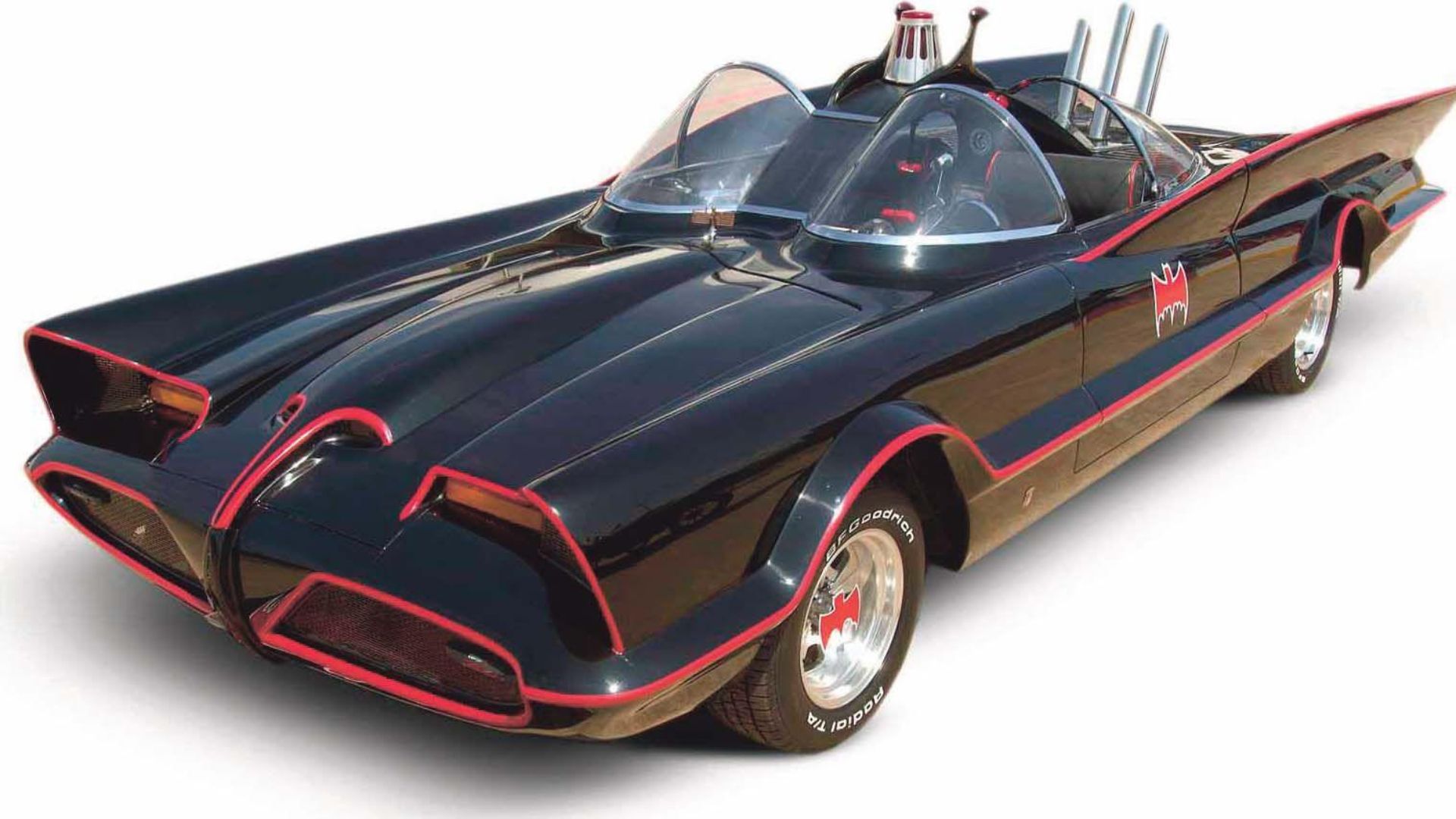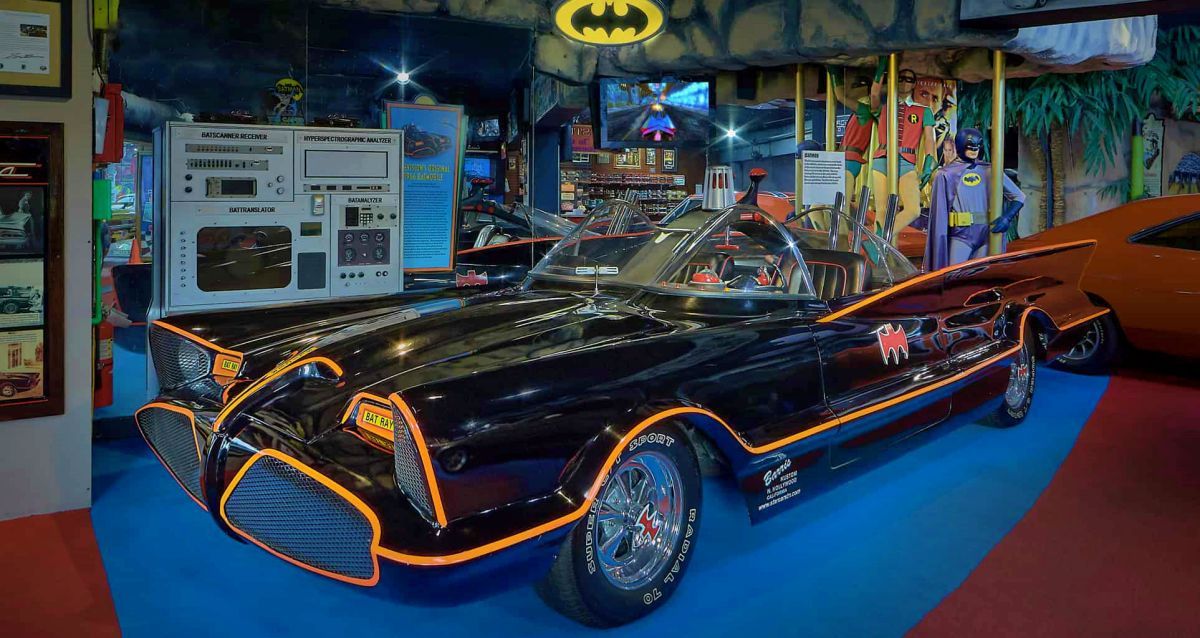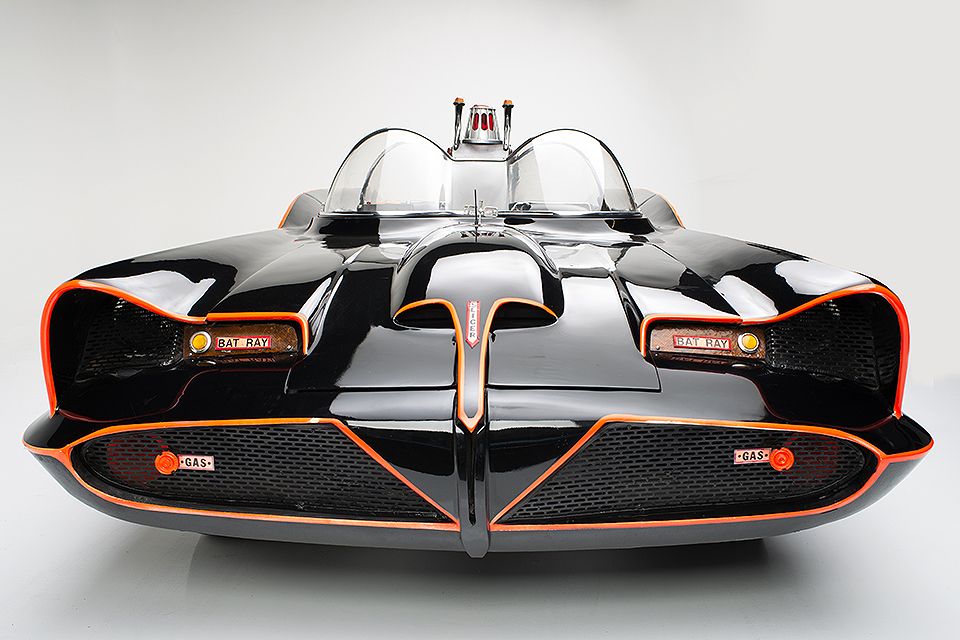Key Takeaways
- The 1966 Batmobile was based on the 1955 Lincoln Futura concept car, hand-built in Italy for a high price. It featured a unique exterior design and was fully operational.
- The Lincoln Futura concept car was later sold to George Barris for a nominal fee. Barris customized the car in just two weeks to create the iconic Batmobile, with upgrades like a bat-themed front fascia and wings.
- The Batmobile used in the Batman TV show faced various mechanical issues and was modified with parts from a Ford Galaxie. It had revolutionary features like a steel cutter and rocket launchers. The iconic Batmobile sold for $4.6 million at an auction in 2013.
When nightfall covers Gotham City and evil forces emerge to wreak havoc on the populace, the caped crusader is always on site to discomfit them and put their hazardous efforts to naught. Unlike archetype superheroes boasting mystical powers, Batman (AKA Bruce Wayne) combats his enemies via attributes attainable in the real-world — mixed martial arts, intellect, swordsmanship, and physical discipline. His humanity, albeit upgraded, has seen him achieve a cult following since he first graced the front cover of Detective Comics in 1939. And just 27 years later, the Batman character made its way to our TV screens, earning him worldwide reverence.
Although the Batman character has morphed to feature distinct thespians, there's one aspect of the hero that remains seemingly unchanged — the Batmobile. Referred to as The Dark Knight's go-to for tracking and repelling the bad guys, the iteration that headlined the Batman TV show in 1966 is indisputably one of the best. Adam West's ride draped in a mix of black and orange wields a menacing design that makes even the worst of criminals develop a contrite heart. And guess what? It's loved by fans of the TV franchise, and ranks among the best Batmobiles from Batman comics and movies.
But what happened to the Batman Batmobile of 1966? This article gives an overview of its roots, when it last made headlines, and awesome facts you might not know about this revolutionary automobile that etches itself as a dream car to many. Let's get started!
Sources utilized in this article have been linked accordingly.
What Car Did The 1966 Batmobile Underpin?
The Batmobile that featured in the Batman TV show imbibed an architecture that was far ahead of its time. However, it's pertinent to note that this piece of automotive ingenuity was based on the 1955 Lincoln Futura concept car that was conceived by Ford's main designers — Bill Schmidt and John Najjar. Hand-built in Turin, Italy, for a sky-high price of $250,000 (a value that translates to $2,700,000 in today's economy), the Futura made its official debut in January 1955.
The concept car's original exterior color was pearlescent white; and to achieve the effect sought by Bill Schmidt, the scales of numerous fishes were pulverized and blended with the paint. Unlike most concept cars that made headlines within that timeline, the Futura was fully operational. For context, it hosted the 368 cubic-inch Lincoln engine and powertrain. That said, the Futura concept also trawled the chassis set-up of the 1953 Lincoln Mark II automobile. Furthermore, it depicted the exterior aesthetic obtainable on most '50s cars, integrating huge outward-canted tailfins, prominent hooded headlight pods, and a double plastic canopy top.
The Futura earned so much positive PR for Ford as the public were starstruck with the arrival of such a futuristic automobile. And while it remained a concept, the Blue Oval manufacturer met public demand by releasing the Futura as a toy and a model kit. Moving on, a laid-back styling of the automobile's tailfins and headlight would later feature on 1956 and 1957 Lincoln nameplates like the Premiere and Capri!
But Ford wasn't looking to end the chatter surrounding the Lincoln Futura concept car anytime soon! As such, it came as no surprise that it featured in the movie tagged It Started With A Kiss movie starring Glenn Ford and Debbie Reynold; but for this media appearance, it was painted red as the original pearlescent white wasn't camera friendly. The red-painted Futura was also showcased in Ford's 1961-released promotional movie titled The Secret Door.
The Lincoln Futura concept car was later sold to a reputable auto customizer named George Barris. Although the original production cost for this automobile was a whopping $250,000, it was sold to Barris for just $1 and "other valuable considerations" by Ford. By the time of the purchase, the car had never been titled, rendering it uninsurable. Due to this issue, the Futura remained idly parked at Barris' shop for several years.
Lincoln Futura Concept Car Engine Specifications
|
Engine |
V8 |
|
Displacement |
6.0-liter (368 cubic-inch) |
|
Power |
330 hp |
|
Torque |
N/A |
|
Fuel |
Regular gas |
The Futura's Transformation Into The '66 Batmobile
Barris was given a timeline of about two weeks to customize a car worthy of being called the Batmobile of the Batman. Although this sounded like a tall order, he immediately went to work. And given the time he had at hand, the customizer decided not to go through the hassle of building a car up from scratch. As such, he opted to customize the Lincoln Futura concept car that'd been languishing at the back of his shop for years.
For this job, Barris sought the services of his associate designer, Herb Grasse; he also hired Bill Cushenbury to perform metal modifications on the car. The Batmobile was completed within 15 days at an estimated cost of $15,000. For the Batmobile, the Futura's front fascia was upgraded to depict a bat's face; the concept car's tailfins were slightly re-formed to resemble the wings of a bat. Other notable changes included a steering wheel modified to take the appearance of an airplane's yoke and the introduction of 15" Rader Wheels. The customized Batmobile also had an orange-black exterior color scheme that integrated Batman logo details.
When filming for the Batman TV show that aired from 1966 to 1968 started, it was reported that the Batmobile's 500-horsepower engine and battery had frequent issues (the vehicle's pricey Mickey Thompson tires also failed repeatedly). To curb most of the car's nagging issues, its transmission and engine were replaced with iterations from a Ford Galaxie.
Although the '66 Batmobile wasn't as aggressive or technologically advanced as variations (i.e., the 1989 Batmobile) that appeared in subsequent Batman movies, it wielded revolutionary add-ons like a steel-made cutter alongside rocket launchers.
This Legendary Batmobile Made Millions At An Auction
The Futura concept car had a star-studded stint in the Hollywood industry. Although it endured wear and tear, and subsequently had some of its parts removed upon retirement, it had earned legendary status — and rightfully so. As such, it was an automobile that remained on the bucket list of many car collectors.
In 2013, George Barris decided to sell the iconic car at the Barrett-Jackson auction event held in Scottsdale, Arizona. Although the '66 Batmobile scored multiple bids from interested buyers, none could eclipse the $4.6 million offer put up by businessman and car collector, Rick Champagne.
Awesome Facts You Never Knew About The 1966 Batmobile
We've just given a rundown of the Batman car used by Adam West in 1966. Although the Batmobile has evolved since then, did you know there are some awesome facts revolving around this legendary automobile you never knew about? Here are three notable mentions that'll leave you bewildered:
The Batmobile Should've Been A Cadillac
In 1965, William McElroy Dozier, producer of Batman, contracted a revered vehicle customizer named Dean Jeffries to build a Batmobile suitable for the Batman TV show. Jeffries had begun customization with a 1959 Cadillac when the studio announced they'd be shooting earlier than envisaged. Since Jeffries couldn't meet up, he was paid off, and the contract was awarded to George Barris.
It's Patented
We've established that the 1966 Batmobile was a legendary car whose heydays were characterized by Hollywood appearances. To avoid unlicensed imitations, George Barris got patent number 205,998S from the United States Patent Office for his exemplary Batmobile design. This patent remains valid till date; in fact, Warner Bros sued Mark Towle (owner of Gotham Garage) in 2011 for infringing on its copyrights by creating a replica.
Adam West Disliked The Airplane-Like Steering Yoke
The 1966 Batmobile, in a bid to showcase a futuristic stance, featured a steering wheel modified to look like the yoke fitted onto an airplane. However, Adam West complained that it was hard to steer; as such, Barris replaced it with the steering wheel of a Ford Edsel in 1967.



